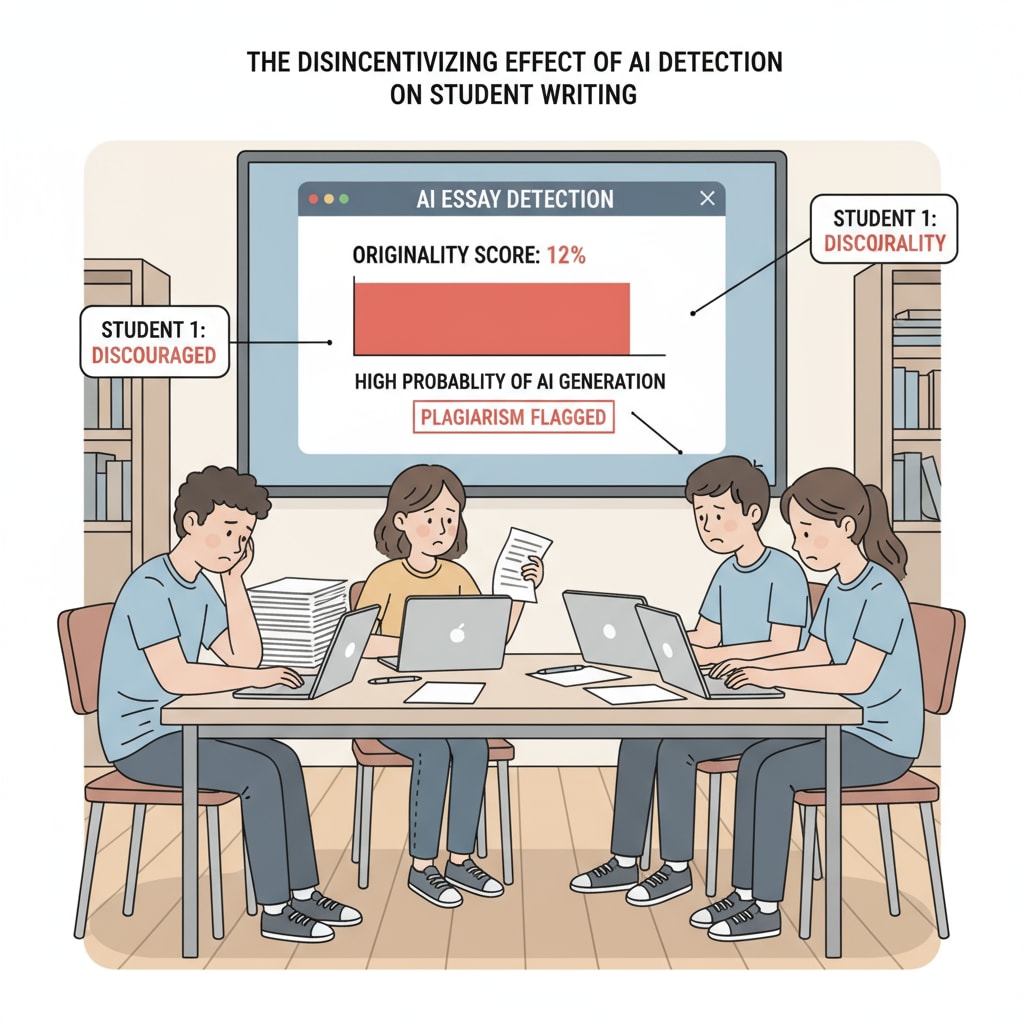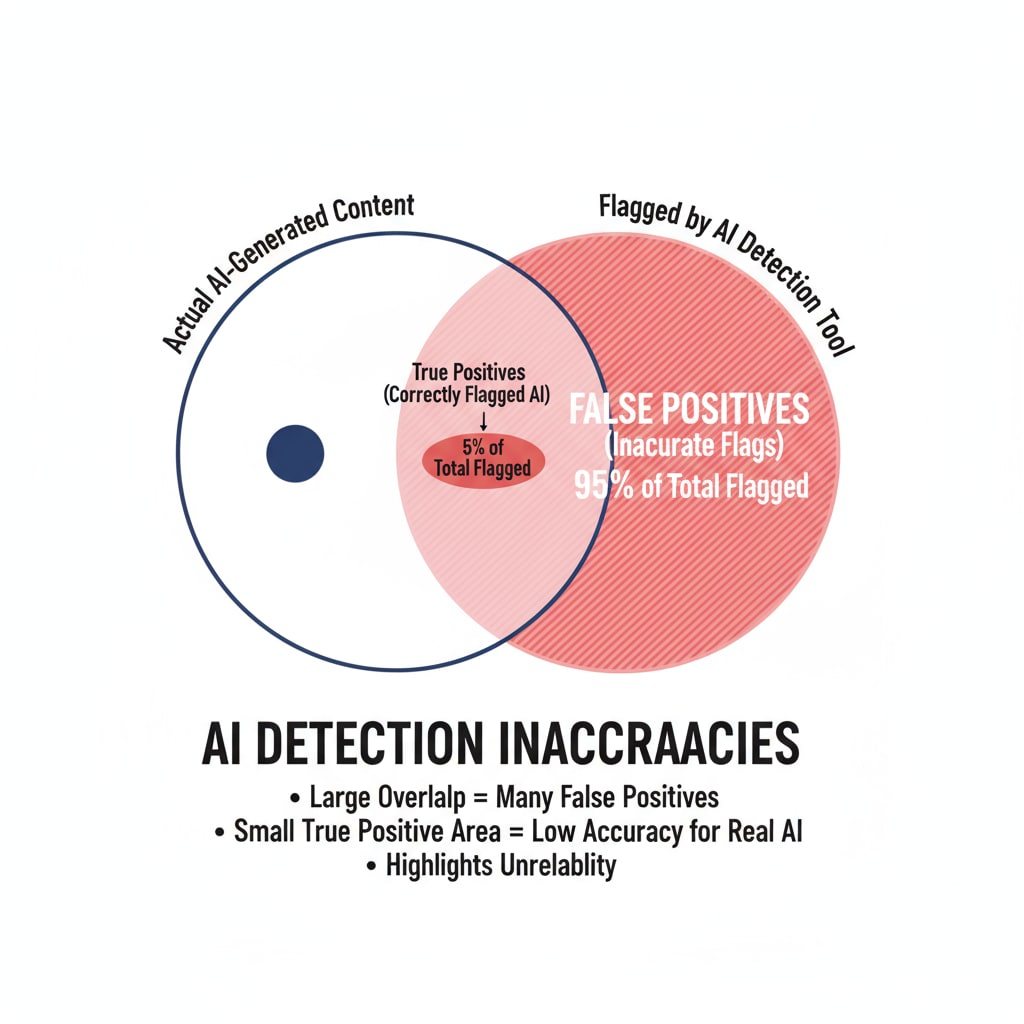Creative writing, AI detection, and student creativity are three elements that have become intertwined in the modern educational landscape. In high school creative writing courses, the introduction of AI detection tools was initially seen as a safeguard against plagiarism. However, these tools are now causing more harm than good, especially when it comes to stifling students’ creativity and enthusiasm for writing.

The False Alarms of AI Detection
One of the most significant problems with AI detection tools is the high rate of false positives. These tools rely on algorithms to compare students’ writing with vast databases of existing texts. However, they often misinterpret unique writing styles, idiomatic expressions, or coincidental similarities as signs of AI-generated content. For example, a student who uses a rare word or a creative turn of phrase might be flagged as having used AI, even though the work is entirely original. According to MIT Technology Review, many detection tools have a high error rate, wrongly accusing students of using AI. This can be extremely demoralizing for students, who may feel that their hard work and creativity are being unjustly questioned.

The Chilling Effect on Creativity
When students are constantly worried about being flagged by AI detection tools, it has a chilling effect on their creativity. They may be afraid to take risks in their writing, experiment with new ideas, or use unconventional language. As a result, their writing becomes more formulaic and less creative. In a creative writing course, the goal is to encourage students to express themselves freely and develop their unique voices. But AI detection tools are creating an environment of fear and constraint. As stated by Education Week, the overemphasis on detecting AI is causing students to hold back in their creative endeavors.
Moreover, the focus on avoiding AI detection can shift the attention away from the true purpose of creative writing, which is to communicate ideas, emotions, and stories effectively. Instead of concentrating on developing their writing skills and exploring their creativity, students are now preoccupied with making sure their work passes the AI detection test. This is a fundamental flaw in the way these tools are being used in the educational setting.
Readability guidance: We’ve seen how AI detection tools are creating false alarms and chilling creativity. Next, we’ll explore the long-term consequences for students’ writing passion. Each point is presented clearly, with short paragraphs and useful external links for further reading. The use of examples and transition words like “moreover” helps the flow of the text.
The Erosion of Writing Passion
High school is a crucial time for students to develop a love for writing. However, the constant threat of being wrongly accused of using AI is eroding their enthusiasm. When students receive negative feedback based on false AI detections, it can make them lose interest in writing altogether. Writing is a form of self-expression, and if students feel that their efforts are not valued or recognized, they will be less likely to engage in it. For instance, a student who spends hours crafting a heartfelt story might be disheartened when it is flagged as AI-generated, leading them to avoid writing in the future.
In addition, the repetitive nature of having to prove their innocence can be exhausting for students. They may have to go through multiple rounds of verification and explanation, which takes time away from their learning and creative pursuits. This not only affects their current writing projects but also their long-term attitude towards writing as an activity. It’s important for educators to recognize the impact these tools are having on students’ motivation and take steps to address the issue.
Readability guidance: The points here are presented simply, with short sentences and paragraphs. Transitions like “in addition” help connect ideas. We’ve shown how AI detection is causing students to lose their passion for writing.
The Need for a Balanced Approach
While it’s important to address the issue of AI-generated content in education, we cannot sacrifice students’ creativity and writing passion in the process. Educators need to take a more balanced approach. Instead of relying solely on AI detection tools, they should use a combination of human judgment and technological aids. For example, teachers can engage in in-depth discussions with students about their writing process, ask them to explain their creative choices, and use this as a way to assess the authenticity of their work.
Furthermore, educational institutions should invest in training teachers to better understand the capabilities and limitations of AI detection tools. This will enable them to make more informed decisions and provide more accurate feedback to students. By taking these steps, we can create an environment where students feel free to express their creativity in writing without the fear of being unjustly penalized.
In conclusion, AI detection tools in high school creative writing courses are causing significant harm to student creativity and writing passion. The false alarms, the chilling effect on creativity, and the erosion of enthusiasm are all clear signs that a change is needed. It’s time for educators to reevaluate the use of these tools and find a way to nurture students’ creative writing abilities in a supportive and understanding environment.


